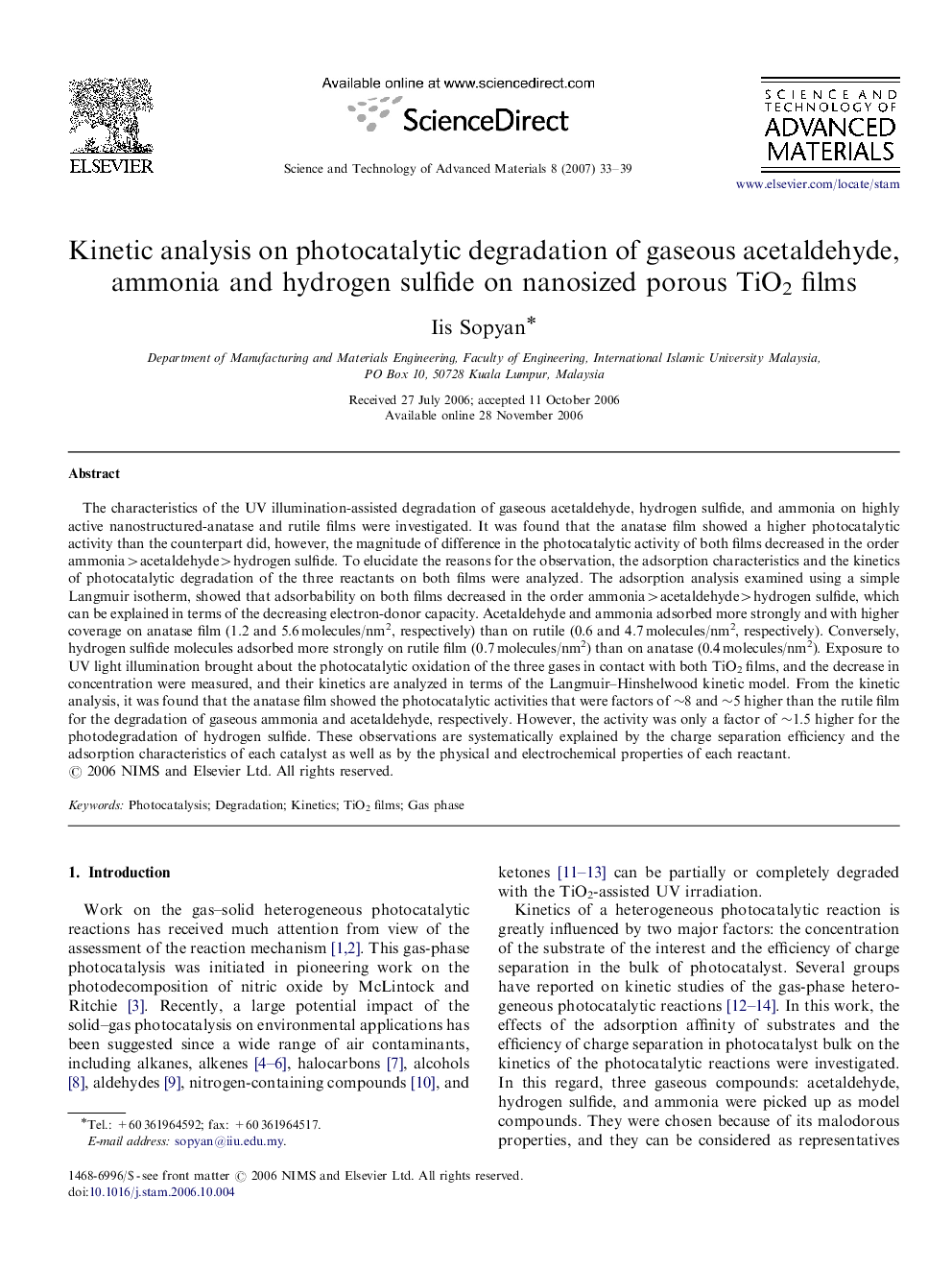| کد مقاله | کد نشریه | سال انتشار | مقاله انگلیسی | نسخه تمام متن |
|---|---|---|---|---|
| 1590864 | 1515468 | 2007 | 7 صفحه PDF | دانلود رایگان |
عنوان انگلیسی مقاله ISI
Kinetic analysis on photocatalytic degradation of gaseous acetaldehyde, ammonia and hydrogen sulfide on nanosized porous TiO2 films
دانلود مقاله + سفارش ترجمه
دانلود مقاله ISI انگلیسی
رایگان برای ایرانیان
کلمات کلیدی
موضوعات مرتبط
مهندسی و علوم پایه
مهندسی مواد
دانش مواد (عمومی)
پیش نمایش صفحه اول مقاله

چکیده انگلیسی
The characteristics of the UV illumination-assisted degradation of gaseous acetaldehyde, hydrogen sulfide, and ammonia on highly active nanostructured-anatase and rutile films were investigated. It was found that the anatase film showed a higher photocatalytic activity than the counterpart did, however, the magnitude of difference in the photocatalytic activity of both films decreased in the order ammonia>acetaldehyde>hydrogen sulfide. To elucidate the reasons for the observation, the adsorption characteristics and the kinetics of photocatalytic degradation of the three reactants on both films were analyzed. The adsorption analysis examined using a simple Langmuir isotherm, showed that adsorbability on both films decreased in the order ammonia>acetaldehyde>hydrogen sulfide, which can be explained in terms of the decreasing electron-donor capacity. Acetaldehyde and ammonia adsorbed more strongly and with higher coverage on anatase film (1.2 and 5.6Â molecules/nm2, respectively) than on rutile (0.6 and 4.7Â molecules/nm2, respectively). Conversely, hydrogen sulfide molecules adsorbed more strongly on rutile film (0.7Â molecules/nm2) than on anatase (0.4Â molecules/nm2). Exposure to UV light illumination brought about the photocatalytic oxidation of the three gases in contact with both TiO2 films, and the decrease in concentration were measured, and their kinetics are analyzed in terms of the Langmuir-Hinshelwood kinetic model. From the kinetic analysis, it was found that the anatase film showed the photocatalytic activities that were factors of â¼8 and â¼5 higher than the rutile film for the degradation of gaseous ammonia and acetaldehyde, respectively. However, the activity was only a factor of â¼1.5 higher for the photodegradation of hydrogen sulfide. These observations are systematically explained by the charge separation efficiency and the adsorption characteristics of each catalyst as well as by the physical and electrochemical properties of each reactant.
ناشر
Database: Elsevier - ScienceDirect (ساینس دایرکت)
Journal: Science and Technology of Advanced Materials - Volume 8, Issues 1â2, JanuaryâMarch 2007, Pages 33-39
Journal: Science and Technology of Advanced Materials - Volume 8, Issues 1â2, JanuaryâMarch 2007, Pages 33-39
نویسندگان
Iis Sopyan,